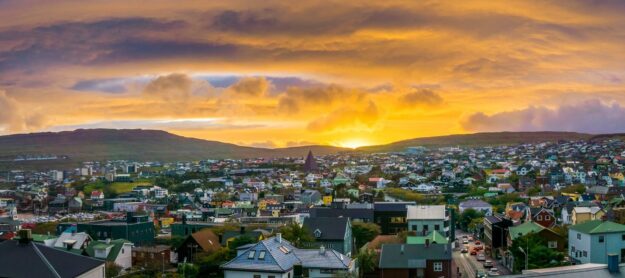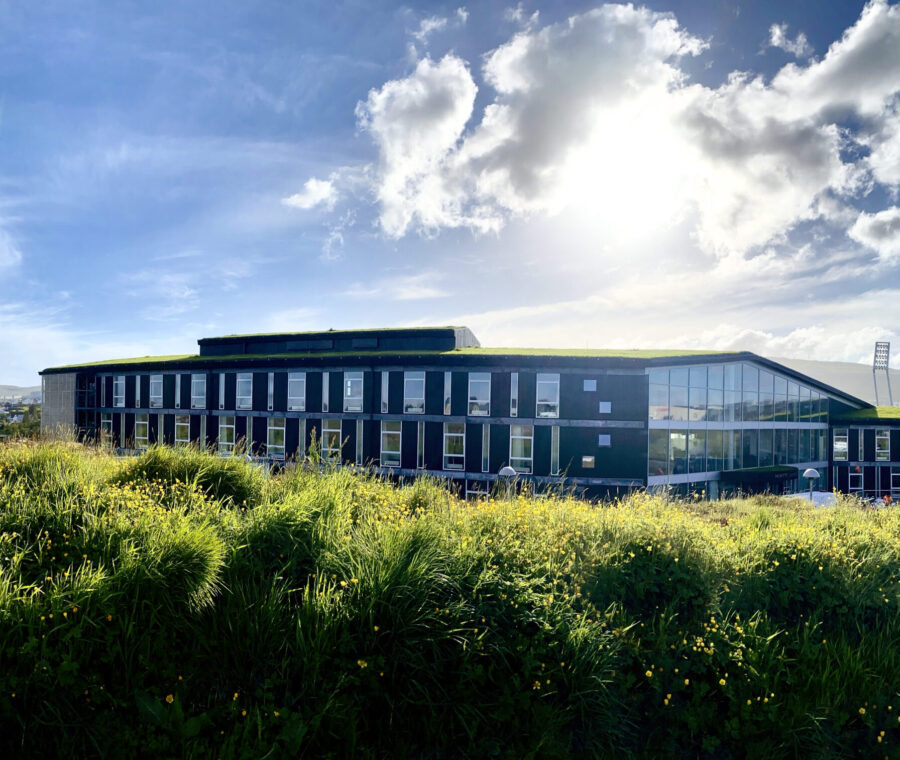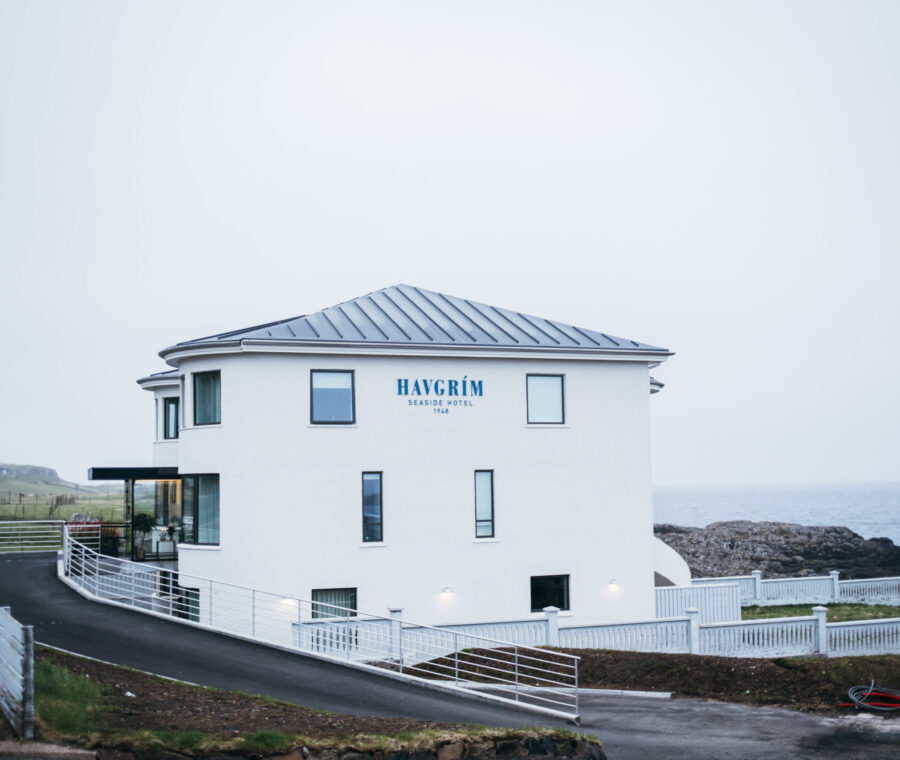Tórshavn, on Streymoy Island, is the capital city of the Faroe Islands.
Luxury Holidays to Tórshavn



Tórshavn, Designed Around You
Tórshavn is located on the island Streymoy and is the capital of the Faroe Islands. In addition to being the country’s largest city and largest municipality, Tórshavn is also the country’s cultural, traffic and economic centre.
Tórshavn is known for being the smallest capital in the world and the city is known for being a modern and vibrant city, with many cafes, restaurants, music venues and cultural gatherings. The old part of Tórshavn is called ’Úti á Reyni’, where there is opportunity to experience the old black-tarred houses with grass roofs.
The Guidebook
Explore Tórshavn
It’s known for its old town, Tinganes, crammed with wooden turf-roofed houses on a small peninsula. The name Faroe Islands first appeared as Faereyjar (in approximately 1225), which means “Sheep Islands”. This presumably led to the national symbol, which is a ram. This name was given by the Viking age settlers from Norway in the ninth century.
There is so much to see and do in Tórshavn itself; from visiting the Tórshavn Cathedral which is the second oldest church on the islands or perhaps the Mikkeller Tórshavn; a 500-year old wooden house featuring some of the best beers! This is all in addition to exploring the unique landscape with hikes, visiting local families, horse riding or even helicopter rides!
Getting There
Even though the Faroe Islands is remotely located in the North Atlantic Ocean, reaching the islands is much easier than most people think. The Faroe Islands is only a short flight from mainland Europe!
You can fly non-stop to the Faroe Islands from a variety of destinations, such as Copenhagen, Paris, Reykjavik, Edinburgh, and Bergen. There are also seasonal flights from many other places.
Flights from Reykjavik, Edinburgh and Bergen to the Faroe Islands with Atlantic Airways are only one hour long, and flights from Copenhagen with either Atlantic Airways or Scandinavian Airlines last only two hours. Direct flights from Paris to the Faroe Islands with Atlantic Airways last 2 hours and 45 minutes. There are between two to four direct flights from Copenhagen to the Faroe Islands each day, depending on season.
Climate
The islands are generally windy, cloudy and cool throughout the year. Variations in altitude, ocean currents, topography and wind mean the climate differs greatly, even though distances between locations is small. This makes for unpredictable and highly changeable weather. It is not uncommon for one location to experience rain, the next snow, and a third location sun. You can literally experience all four seasons in one day!
Despite the islands’ northern latitude location, summers are cool with an average temperature of 13°C, and winters are mild, with an average temperature of 3°C. Summer days bring long hours of sunlight (19 hours, 45 minutes on the longest day, June 21). In contrast, days during the winter can be as short as 5 hours.
Geography
The Faroe Islands are an archipelago made up of 18 rugged islands, separated by narrow sounds and fjords. These volcanic islands lie in the North Atlantic Ocean at 62º north and 6º47’ west, located about halfway between Scotland and Iceland.
Their total land mass totals at 1,399 square kilometres, with a maritime economic zone covering 274,000 square kilometres and a population of nearly 50,000.
The overall length of the archipelago from north to south is 113 kilometres and 75 kilometres from east to west.
My family and I traveled to Sweden to see The Northern Lights in March of 2023. From the planning process to every detail of the trip, I could not have been more pleased with our experience. Alex was exceptional to work with. His guidance on the time of year, where to stay, activities to do and how to get to and from everything was spot on. I have never used a tour company before but thought a trip of this kind would be easier with some help. I am so glad that I did. The entire week was seamless and completely stress-free, allowing us to truly enjoy Sweden and our time together as a family. I will be recommending Off The Map travel to friends and family and will certainly be using them myself again in the future.
Amy was a great help with planning this trip. Our trip turned out amazing. I also was very grateful for Off the Map’s Front Desk service, which promptly handled an on the spot issue we had.
We originally hired Off the Map Travel in 2020 to set up a trip to see the Northern Lights. That didn’t happen, thanks to COVID. But, we persisted and in March of 2023, we took a 16-day trip that included both Iceland and Norway. IT WAS MAGICAL! Off the Map took care of everything! We were pampered at every stage of our trip. The people they hired and the activities they planned added up to a trip that will set the standard for any we’ll ever take in the future. Alex and his team were fabulous! We recommend them without restraint!
I used OTMT to organise a holiday to see the Northern Lights for my partner’s 50th birthday. They took the time to understand my priorities, the kinds of places we like to stay and the things we like to do. They recommended a fabulous itinerary in Norway centred around the Lyngen Experience Lodge. The holiday itself lived up to expectations and I have no hesitation in recommending OTMT. They listened carefully during the planning and delivered the perfect present for my partner.
The best travel experience ever on every level you can think of during a Lapland expedition (food, activities, timings, accommodation, transport, service, equipment…). I highly recommend Off The Map Travel for their outstanding level of professionalism and detail oriented mindset!
Exceptional service throughout the entire planning and booking process – travel agencies don’t get any better than this. A brilliant, seamless experience matched by the holiday experience itself. Would recommend ‘Off the Map Travel’ to anyone considering booking for a Nordic experience ‘par excellence’.
Fantastic trip to Svalbard which delivered the true Arctic experience we were hoping for. The hotels were excellent and the activities – dog sledding and snowmobile expedition were lead by first class guides.
Top tip! The champagne tasting in the world’s most northerly wine cellar in the exceptional Funken Lodge is not to be missed!
I would thoroughly recommend this company. Their planning and advice was spot on. Alex responded to my calls and emails very promptly. I will definitely use them again for future trips.
Amy planned a fantastic trip! Everything was very well-thought out. All transfers went smoothly, accommodations were amazing, great restaurant recommendations and the tours were once-in-a-lifetime, can’t book it yourself off the internet experiences. The guides were all fantastic. Communications were prompt and everything worked exactly the way it was supposed to. What a pleasure! Already working on our next trip.
Well-organized trip to Norway and Svalbard with great accommodations and activities. Gwen was communicative and responsive to requests. Highly recommend!
Off the Map Travel was great! Alex helped us plan the most amazing 10 day honeymoon to Iceland. He gave us great recommendations and was so patient with us during the planning process!


